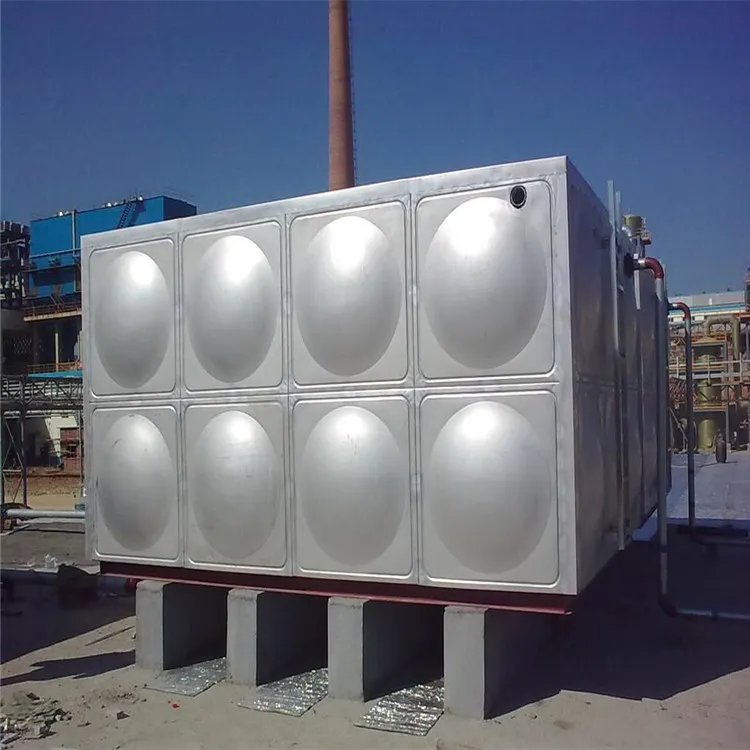loading...
- No. 9, Xingyuan South Street, Dongwaihuan Road, Zaoqiang County, Hengshui, Hebei, China
- admin@zjcomposites.com
- +86 15097380338
- Welcome to visit our website!
frp deck panels
Understanding FRP Deck Panels The Future of Construction Materials
As the construction industry continues to evolve, innovative materials are increasingly being adopted to enhance the efficiency, durability, and sustainability of building projects. One such material that has gained significant popularity is Fiber-Reinforced Polymer (FRP) deck panels. These advanced materials offer a range of benefits, making them an attractive choice for both new construction and renovation projects.
What are FRP Deck Panels?
FRP deck panels are composite materials made from a polymer matrix reinforced with fibers, commonly glass, aramid, or carbon. This combination provides a strength-to-weight ratio far superior to that of traditional materials like steel and concrete. The panels are typically manufactured through processes such as pultrusion or resin infusion, resulting in strong, structural panels suitable for various applications, including bridges, walkways, and flooring systems.
Advantages of FRP Deck Panels
1. Lightweight One of the most significant advantages of FRP deck panels is their lightweight nature. Weighing significantly less than steel or concrete, these panels simplify transportation and installation. This characteristic not only reduces labor costs but also minimizes the structural requirements of supporting systems, allowing for more flexible design options.
2. Corrosion Resistance FRP materials are inherently resistant to corrosion and chemical damage. This makes them ideal for environments where exposure to moisture, chemicals, or salt is prevalent, such as marine applications or areas with high humidity. Unlike traditional materials, FRP does not rust or degrade over time, ensuring a longer lifespan and reduced maintenance costs.
3. Durability FRP panels are designed to withstand extreme weather conditions, UV radiation, and impact. Their robust nature allows them to perform reliably over their lifespan, making them a cost-effective choice in the long run. This durability is particularly beneficial for infrastructure projects where maintenance can be a significant expense.
4. Design Flexibility The manufacturing process of FRP panels allows for a wide variety of shapes and sizes. This design flexibility enables architects and engineers to create complex structures that would be challenging to achieve with conventional materials. Additionally, FRP can be tailored for specific applications, further enhancing its versatility.
frp deck panels

5. Aesthetic Appeal Beyond functionality, FRP deck panels can be designed to meet aesthetic requirements. They can be finished in various colors and textures, blending seamlessly with the surrounding environment. This makes them suitable for both functional structures and architectural features.
Applications of FRP Deck Panels
FRP deck panels find applications across various sectors, including
- Transportation Infrastructure In bridges and walkways, FRP offers strength while reducing the load on supporting structures. Their lightweight and durability allow for efficient designs that can extend the life of transportation systems. - Commercial Building Projects In flooring systems, FRP panels provide a resilient option that is both lightweight and easy to install. This is particularly valuable in high-rise buildings where high-performance materials are essential.
- Marine and Waterfront Structures The corrosion resistance of FRP makes it an ideal choice for docks, piers, and any structures exposed to harsh water conditions.
- Industrial Facilities In environments where chemical exposure is common, FRP offers a flexible and durable solution that can resist degradation over time.
Conclusion
As the construction industry embraces more sustainable and efficient materials, FRP deck panels stand out as a revolutionary option. Their combination of lightweight, strength, corrosion resistance, and design flexibility makes them exceptionally versatile for a wide range of applications. With ongoing advancements in composite technology, we can anticipate an even broader adoption of FRP materials, paving the way for innovative architectural and engineering solutions that address the challenges of modern construction. As we move forward, integrating FRP deck panels into building practices will not only enhance the longevity of our structures but also contribute to more sustainable construction methods, setting a new standard for the industry.
-
The Rise of FRP Profiles: Strong, Lightweight, and Built to LastNewsJul.14,2025
-
SMC Panel Tanks: A Modern Water Storage Solution for All EnvironmentsNewsJul.14,2025
-
GRP Grating: A Modern Solution for Safe and Durable Access SystemsNewsJul.14,2025
-
Galvanized Steel Water Tanks: Durable, Reliable, and Ready for UseNewsJul.14,2025
-
FRP Mini Mesh Grating: The Safer, Smarter Flooring SolutionNewsJul.14,2025
-
Exploring FRP Vessels: Durable Solutions for Modern Fluid HandlingNewsJul.14,2025
-
GRP Structures: The Future of Lightweight, High-Performance EngineeringNewsJun.20,2025
